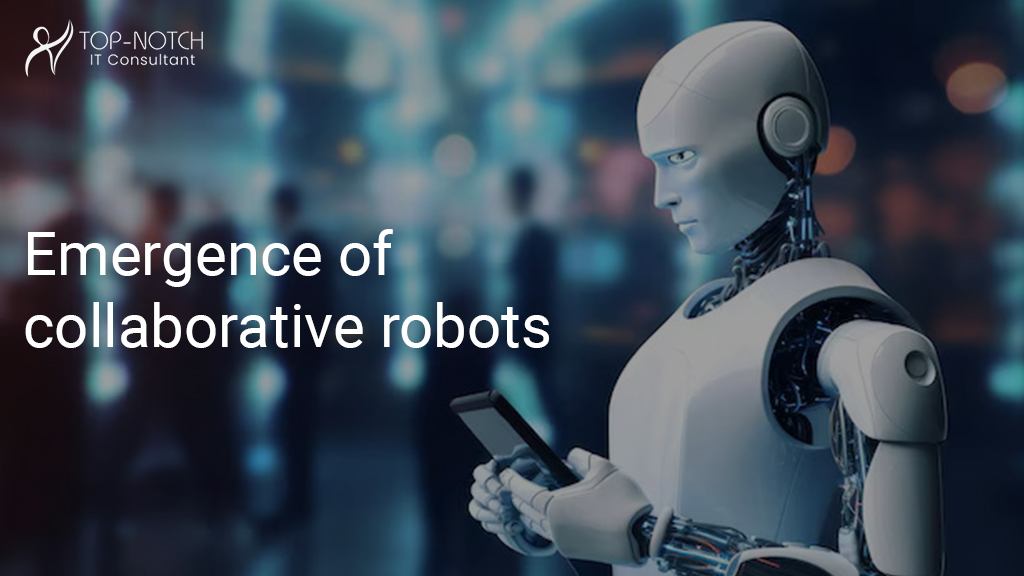Future of Robotics: Trends to Watch Over the Decade

A revolution in robotics is on the verge of breakthrough by the high speed of technological advancements and increased demand for automation. Emerging robotics technologies made possible by artificial intelligence, machine learning, and advanced materials are ready to transform industries, reshape economies, and redefine human interaction with robots. Next-generation Robotics would have to unfold through the dimensions of the sectors – smarter, more efficient, and increasingly automated.
Artificial Intelligence integration into robotics
The most important trend with which Emerging Robotics Technologies is extensively permeated is the seamless integration of artificial intelligence into robotic systems. Essentially, AI-powered robots are becoming smart enough to decide, learn, and adapt in a specific environment to new tasks.
With these advancements, Next-generation Robotics are reaching new milestones where robots will begin to perform actions like complex surgical procedures, autonomous navigation, human-robot collaboration in manufacturing, among others. AI-powered robots are no longer bound to predefined actions but are able to interpret data and predict outcomes; this eventually broadens their utility across industries.

Emergence of collaborative robots
Cobots are one of the critical areas of the future of robotics. They have been designed and built to be safely working alongside people, which changes workplaces by increasing productivity and reducing injury risks.
Cobots are gaining increasing traction in all the sectors of service industries, such as manufacturing, healthcare, logistics, and retail, to complete tasks that require strength, precision, and repetition and leave the high-level thinking and creative work to human beings.
Breakthroughs in autonomous vehicles and drones
Although still at their nascent stages, autonomous vehicles and drones are some of the next emerging robotics technologies that will revolutionize transportation, logistics, and other ways of delivering. As is the case with autonomous drones, so with agriculture, construction, and disaster management. Sensors with AI make it possible for the drones to carry out crop monitoring, inspection of infrastructure, and searching for victims of natural disasters with a very high degree of precision.
Human-Robot interaction and emotional intelligence
The new age of Robotics is not merely the functionality that it defines, but the improvement of man-robot interaction as well. Robots are engineered and developed to understand and respond and even predict human emotions. Increasingly, these emotionally intelligent robots are being used in caregiving, customer service, and education. As these systems become more intuitive and empathetic, robotics will transcend their physical tasks to take care of emotional and social needs among humans and robots, hence fostering deeper intimacy between humans and robots.
Robotics in healthcare
Healthcare is among the most promising fields of the emerging robotics technologies. Robots already assist in surgeries, conduct diagnostics, and streamline patient care. The following decade will witness more complex healthcare robots, from micro-robots designed to deliver targeted drug therapies to exoskeletons assisting in rehabilitation for human physical exercise.
Healthcare robotics will surely bring a transformation of accessibility, efficiency, and patient outcomes from all over the world.
Advancements in robotics in manufacturing and supply chain
Manufacturing has been considered to be the domain of robotics, but now comes emerging robotics technologies that will take automation to the new horizon. Smart factories with AI-driven robots are streamlining production lines, reducing waste, and increasing output.
Robots add control over inventory, packaging, and last-mile delivery to the supply chain. Autonomous mobile robots are now embedded in the warehouse stream, creating efficiency and a reduced need for people.
This new generation robotics can guarantee well-functioning goods flows while eliminating labor shortages, from increasing demands for speedier deliveries.
Robotic impact on environmental sustainability
Robotics is slowly playing a good role in addressing key global challenges. From monitoring ecosystems to reducing industrial waste, new robotics technologies are being exploited towards sustainable futures.
For instance, underwater robots assist in research regarding marine life and also in monitoring the amount of pollution while agricultural robots improve crop yields by employing precision farming techniques. Robots for recycling and waste management also are attracting attention, making processes that involve much labor and seem ineffective completely efficient.
As there is increased focus on sustainable development, the influence of robotics on environmental conservation will mark one area of growth in the next ten years.
Conclusion
These are Emerging robotics technologies, and here are next-generation robots. They are transformed not just by changing industries but also by changing the face of human lives-and impact every other area of society.
As we welcome and embrace this exciting future, new innovations, teamwork, and ethics will determine how we realize the full potential for robotics. The next ten years will be the epoch of peerless progress wherein the technological world will not only get more and more efficient but also redefine our relationship with technology.


The Role of QA in AI-Driven Software Development: Ensuring Accuracy and Reliability
February 19, 2025 Read More
Understanding the Environmental Impact of Cloud Computing: Strategies for Sustainable IT
February 12, 2025 Read More
